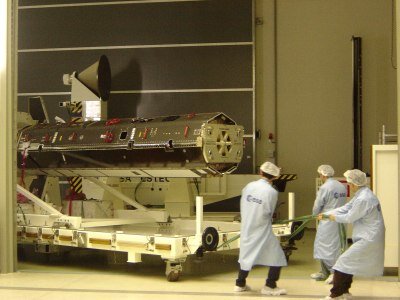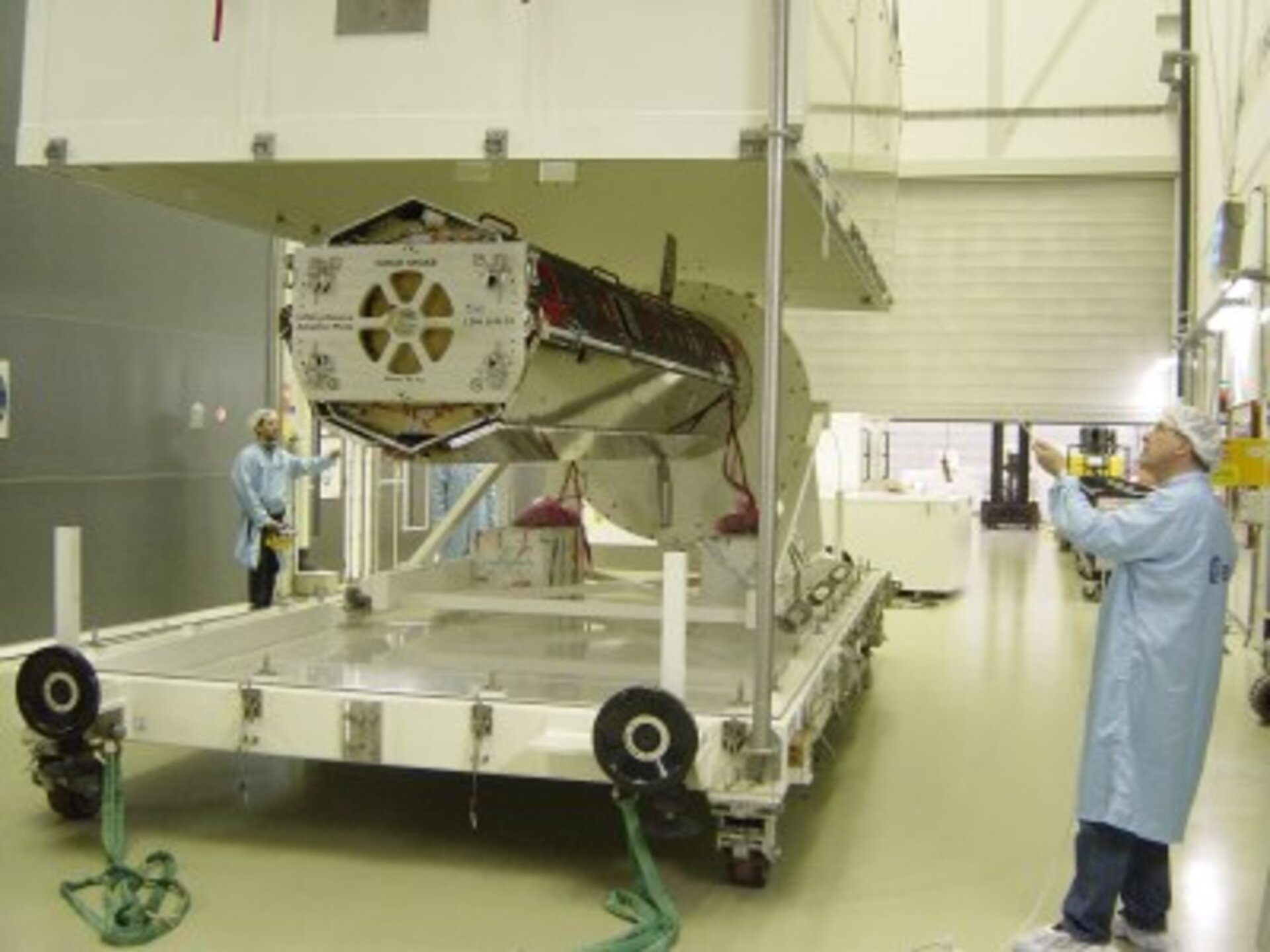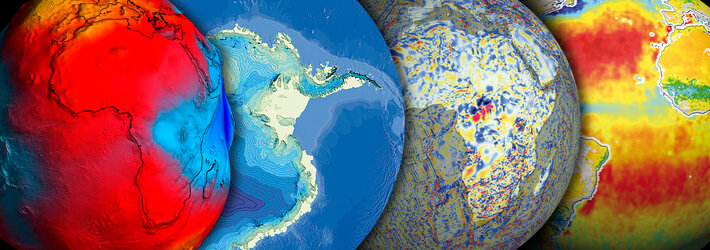ESA’s gravity satellite arrives at ESTEC for testing
Last week a significant milestone was reached in the development of the GOCE (Gravity Field and Steady-State Ocean Circulation Explorer) mission when the structural model of the satellite arrived at ESA’s ESTEC facility in Noordwijk, the Netherlands for testing.
The slim 5-metre long structure spent 48 hours on the road being carefully driven from Turin, Italy where it had been integrated by the satellite prime contractor Alenia Spazio. After its safe arrival, the structural model had to be slowly unpacked and prepared for testing in one of the Test Centre’s ‘clean rooms'.
“After several years on the drawing board this phase marks a very exciting period for us. To see the structural model coming to ESTEC for testing is a strong motivation for everyone working on the GOCE project", said Dr Rune Floberghagen, the GOCE System and Mission Performance Engineer.

GOCE, scheduled for launch in 2006, is the first Earth Explorer Core Mission to be developed as part of ESA’s Living Planet Programme. It will provide unprecedented high accuracy and high spatial-resolution global models of the Earth’s gravity field and of the geoid. This will significantly advance our knowledge in areas of oceanography, solid-Earth physics, geodesy, glaciology and climate-change research. The data resulting from this high-accuracy gravity field mission will also have a number of practical applications, for example, an improved geiod model will be of importance for surveying and in the construction industry.

Over the next 3 months the GOCE structural model will undergo stringent mechanical testing to ensure that the design is adequate to withstand the mechanical loads during launch. The model consists of the outer structure and internal ‘floors’ which will support all the payload equipment units. For this testing exercise the structure is fitted with dummy equipment to represent the gradiometer, the GPS receivers and other units. The satellite model is currently being carefully aligned on the test equipment and then several days of precise mass and mechanical measurements will be performed. After this, the model will undergo vibration and acoustic tests, followed by shock tests to ascertain whether the satellite will withstand the separation from the launch vehicle. Finally, the alignment will be tested again before the model is prepared for shipping to EADS Astrium, the platform contractor, in Friedrichshafen, Germany. The structure built by EADS Casa, Spain, will be refurbished and used as the flight model.

The flight model will be a slim, octagonal satellite about 5 metres long and have a cross-sectional area of 1m2, and it will weigh about 1200 kg.





